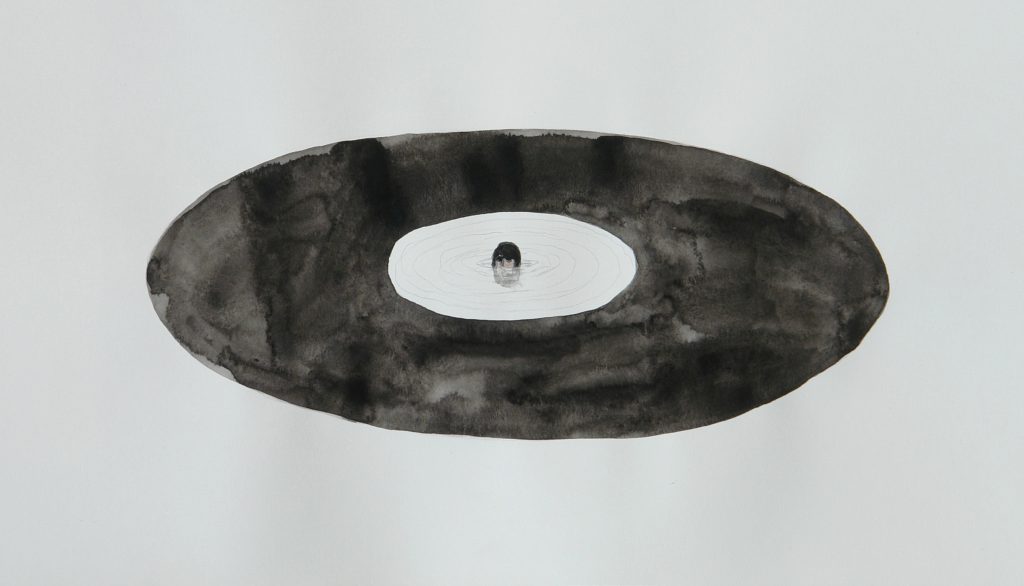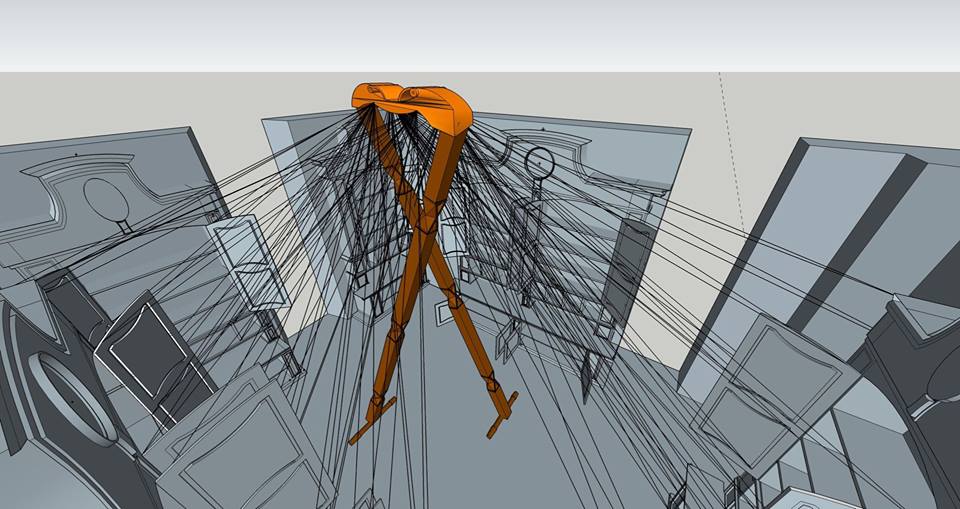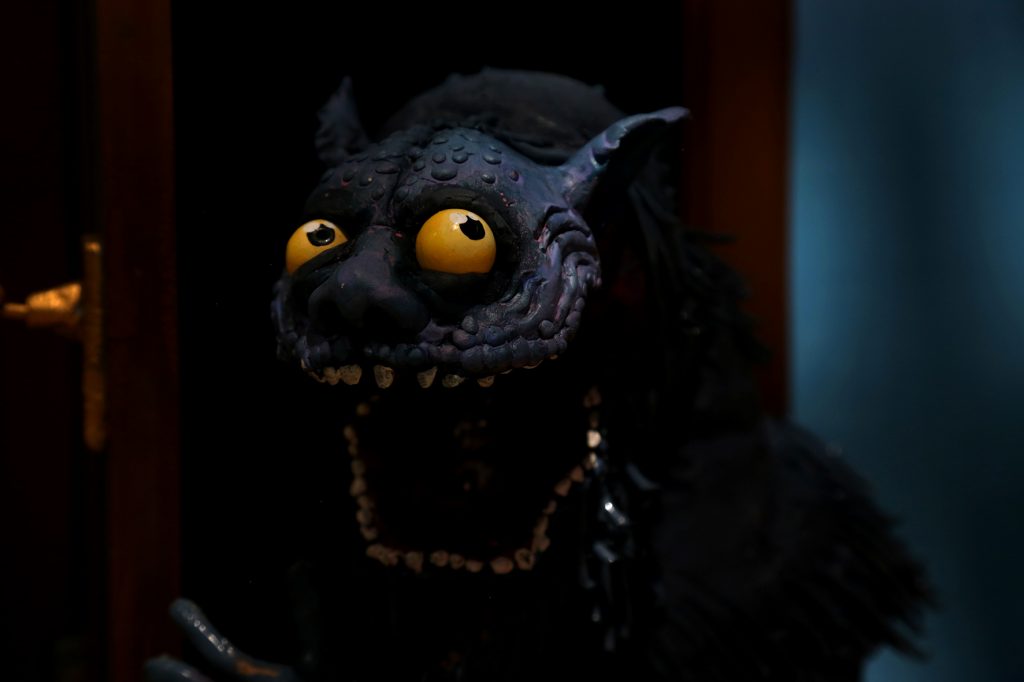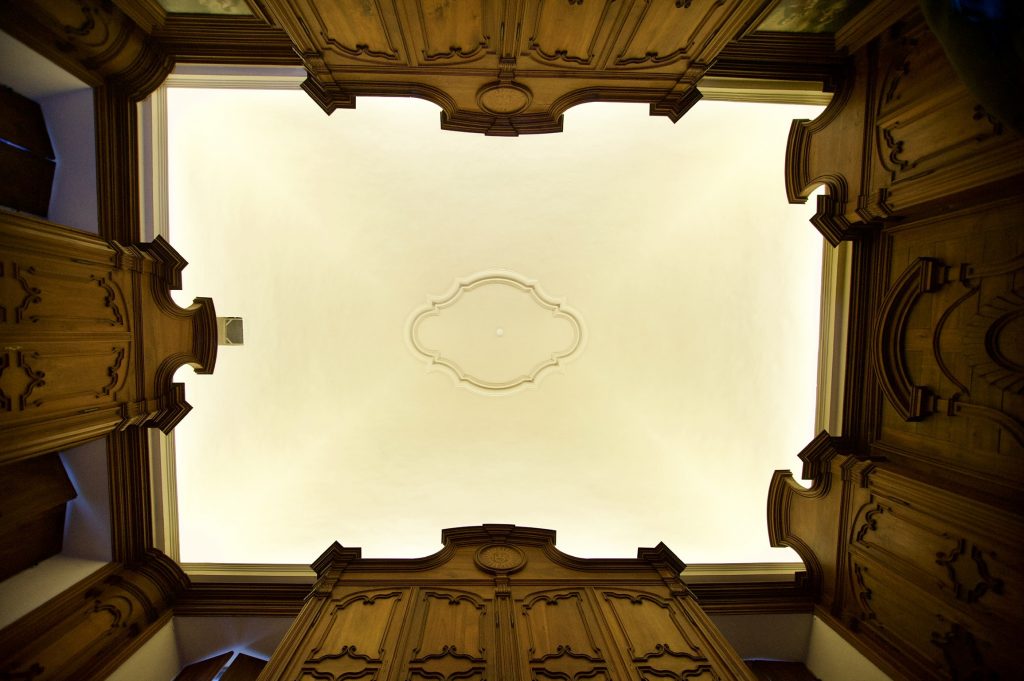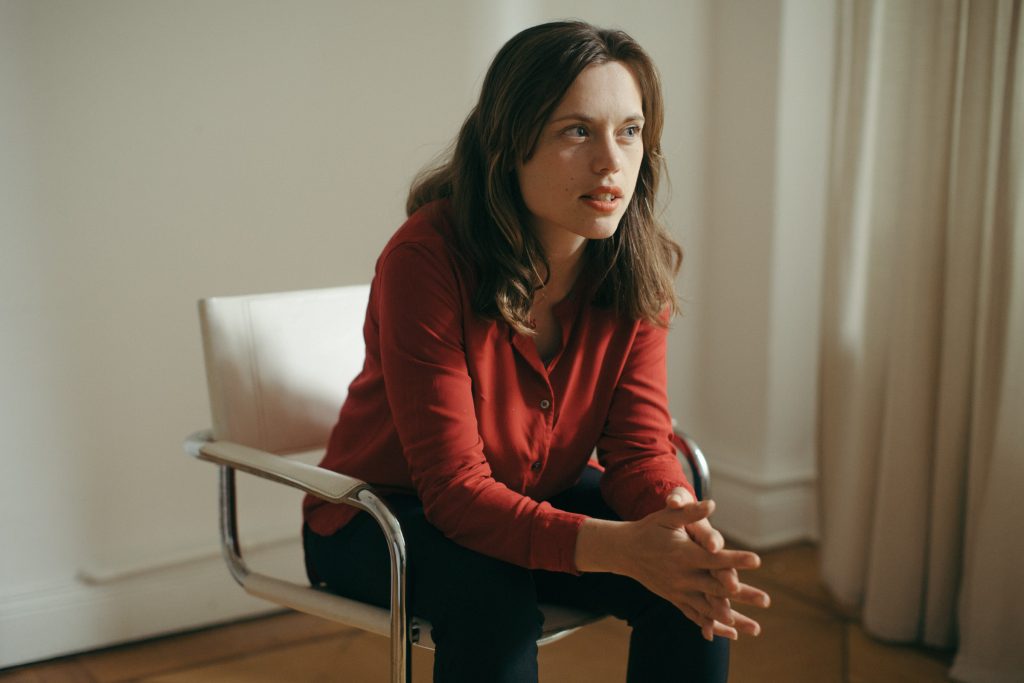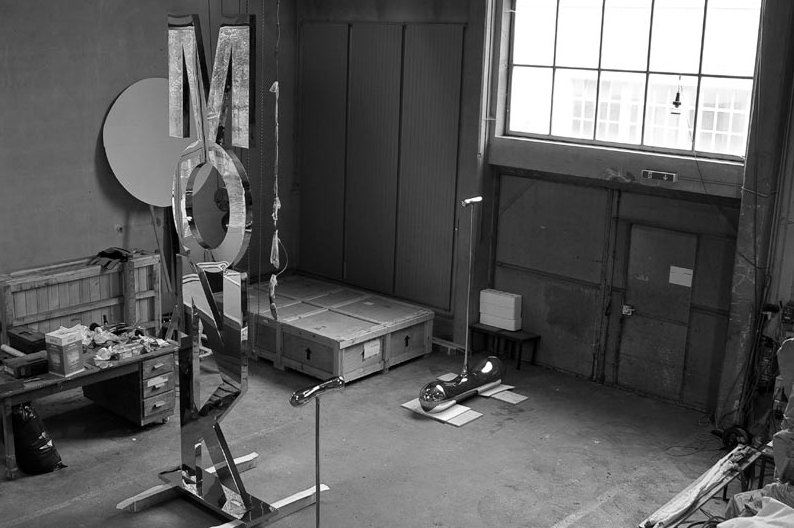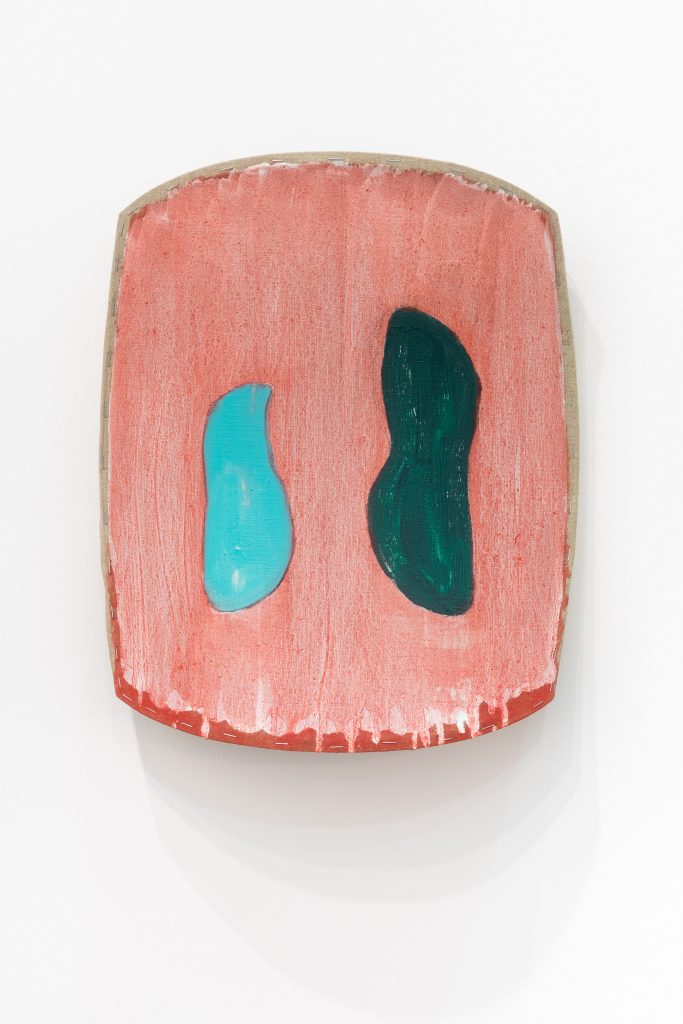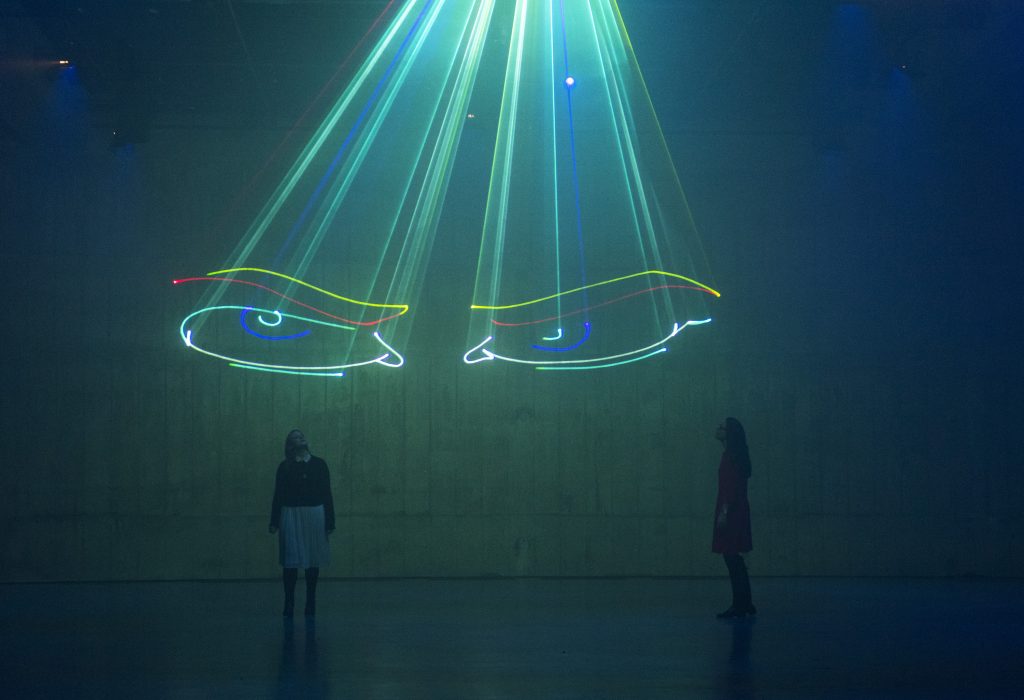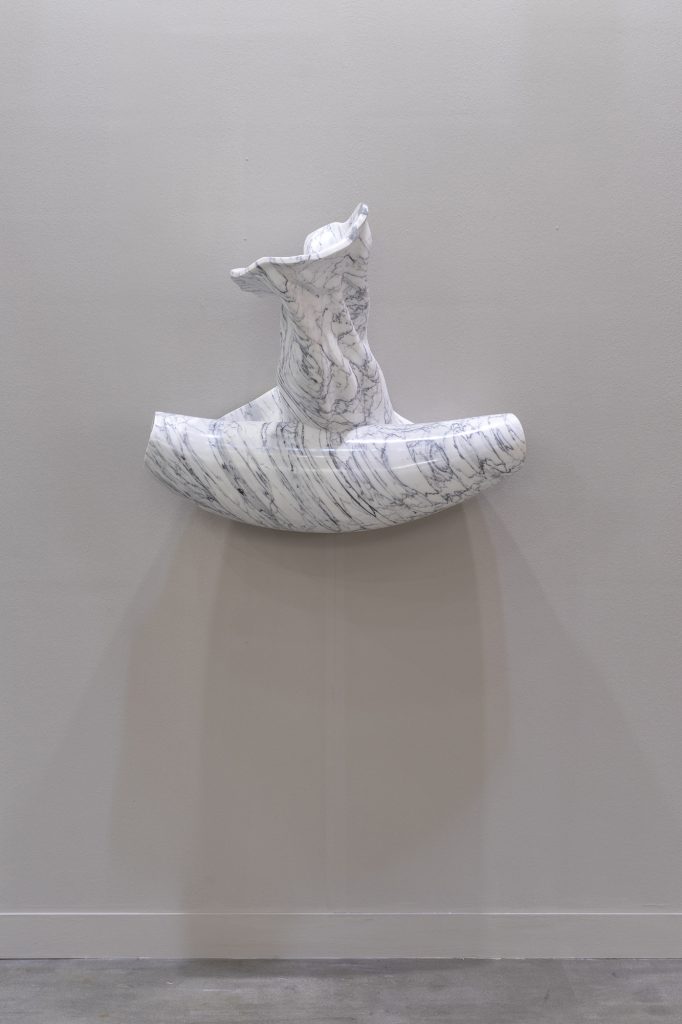- NEWSLETTER JANUARY 2019 | JORGE MACCHI
- MATTEO OLIVERO PRIZE | WINNING PROJECT
- THE BLANK & BERGAMO FILM MEETING | NATHALIE DJURBERG E HANS BERG RITES OF PASSAGE | 03.09.19 - 03.31.19
- PREMIO MATTEO OLIVERO | 41th EDITION - THE ORIGIN
- THE BLANK AT BAF - BERGAMO ARTE FIERA 2019 | 01.12.19 - 01.14.19
- THE BLANK & OSPEDALE PAPA GIOVANNI XXIII | HANNE LIPPARD - SYZYGY | 12.16.18
- NEWSLETTER DECEMBER 2018 | JONATHAN MONK
- THOMAS BRAMBILLA | THEOGONY ACCORDING TO RON GORCHOV | 12.15.18 - 01.26.19
- NEWSLETTER NOVEMBER 2018 | LORENZO SENNI
- THOMAS BRAMBILLA | GROUP SHOW – COPPER, MARBLE, COTTON | 10.20.18 - 12.01.18
- [== Prev ==] [== Next ==]
Jorge Macchi
Overwhelmed
2018
watercolor on paper
29,7 x 42 cm
Courtesy the artist and GALLERIA CONTINUA, San Gimignano / Beijing / Les Moulins / Habana
Photo Ela Bialkowska, OKNO Studio
THE BLANK CONTEMPORARY ART
99 WORDS WITH JORGE MACCHI
The artist takes the hand of the visitor and leads him into the forest. He knows it very well (in fact he has planted all the trees). He takes the visitor to a clearing in the middle of the forest. They stay there for some minutes in silence. Taking advantage of a moment of distraction the artist disappears behind some bushes and runs until he reaches the limit of his forest. The visitor suddenly realizes that he is alone in an unknown place. He tries some paths to go out but all of them bring him to the very same place. He regrets having been distracted with those flowers.
SANTIAGO REYES VILLAVECES (Bogotà, 1986) IS THE WINNER OF THE 41ST EDITION OF PREMIO MATTEO OLIVERO
Santiago Reyes Villaveces (Bogotá, Colombia 1986) is the winner of the 41st edition of Premio Matteo Olivero, organized by the City of Saluzzo and Fondazione Amleto Bertoni with the aim of promoting the territory through art. Premio Matteo Olivero is placed within START / history and art in Saluzzo, the festival dedicated to all forms of art that takes place in the capital of the Marquisate from April 26th to May 26th.
The artistic direction has been entrusted to Soluzioni Turistiche Integrate, which relies on the collaboration of Stefano Raimondi for the curatorship of the Prize; Raimondi, formerly curator at GAMeC – Galleria di Arte Moderna e Contemporanea in Bergamo, is director of The Blank Contemporary Art, the main Italian network for promotion and valorisation of contemporary art.
Origin, intended as something at the beginning of something else, the fundamental cause, the matrix, the inspiring element of an event, is the theme chosen for the 41st edition of the Prize, which communicates with the theme chosen for START, i.e. Character, of which the Prize interprets the origin.
The international jury composed by Chrissie Iles, Curator at the Whitney Museum of American Art in New York, Nicola Ricciardi, Artistic Director at OGR, Turin, Arturo Demaria, Counselor at Fondazione Amleto Bertoni, Roberto Giordana, deputy manager at Cassa di Risparmio di Cuneo and Stefano Raimondi, curator of the Prize, has unanimously decided to reward Harp project by Santiago Reyes Villaveces, created by the artist in collaboration with the composer Nicolás Jaramillo and the musicologist Daniel Villegas Velez: “for having been able to interpret in an innovative and poetic manner the Sacristy of Ex-Sant’Ignazio Church, presenting a work that has its roots in the Jesuits’ history and capable of dealing with a complex issue, such as colonialism, in a lyrical and original way. At the same time Harp interacts with Saluzzo’s traditions, such as music and craftsmanship, and presents itself in its monumentality as a body capable of interacting with the viewer “.
Forty-one artists of sixteen different nationalities took part in the Prize, invited by prestigious international advisors: Americans, Azeris, Brazilians, Britons, Colombians, Koreans, Cypriots, Filipinos, French, Iranians, Israelis, Italians, Netherlanders, Polish, Russians and Swiss challenged themselves by presenting original and innovative projects to value a suggestive location rich in history, such as the Sacristy of Ex-Sant’Ignazio Church, which has now become a room in the Town Hall of Saluzzo.
The idea takes shape in the form of a solo exhibition at the Sacristy of the Ex-Sant’Ignazio Church, open from April 26th, the opening day of START festival. The current shape of the hall – part of the architectural complex including the College, now Palazzo Comunale – dates to 1725, but since 1831 has served as an archive, without changing its structure. Inside, it is still possible to admire two frescos representing Sant’Ignazio on both doors and the coat of arms of the Jesuits, who inaugurated the Sacristy at the beginning of the 18th century. Harp project consists in building an expanded copy of the Tópaga harp (1680), that is meant to occupy the architectural space of the Sacristy. The instrument’s design is deformed using an elliptical structure with two focal points. Using the Sacristy’s open drawers, windows, and physical structure as resonance boxes, Harp creates a polyarchic harp, a historical and architectural flow, aiming to destabilize the original history. In 1725, the Order of the Jesuits inaugurated the Sacristy of Sant’Ignazio Church in Saluzzo. The same year, the Jesuit Father José Gumilla was directing one of the most ambitious territorial expansions in the conquest of the Americas in the Orinoquía region of the New Kingdom of Granada—a contiguous region shared today by Colombia and Venezuela. The practice of polyphonic European music was one of the main tools used to convey the system of European values during this period of Jesuit expansion and evangelization in the Americas. Among the instruments used to organize processes of territorial, cultural, and sensory colonization, the harp stood out for its portability and structural simplicity.
Using the harp as a symbol of its ancient Greek and Roman origins, Italian Humanism strategically deployed art’s mimetic capacity to (re)form communities in the “New World.” For the Jesuits, the Renaissance harp worked as a synecdoche capable to make the classical universe of European cosmology present and audible.
Harp uses the numerous drawers and lockers of Sacristy’s furniture, opening them and making the archive’s structure open, visible and resounding. The instrument will use a set of diverse resonance boxes: the building itself, the drawers and the windows. Created in collaboration with the composer Nicolás Jaramillo, a musical piece will be performed during the exhibition’s opening by a local choir, from the province of Saluzzo. Singing with their heads inside the open drawers, the performers will not directly play the harp, but will use the vibration of their voices to make the strings resonate through the space. The entire structure of Harp parasites the space it inhabits to sustain itself amidst a network of physical and discursive tensions to build a temporal and embodied experience connecting two dissonant spaces and historical experiences. This project renews and gives new meaning to the harp through an erratic process of sensorial counter-conquest.
One of the main innovations of the 41st edition of the Prize is a change in the mode of participation. Artists have been selected and invited to take part in the Prize by twenty-four major international advisors, curators and directors from international institutions including: Solomon R. Guggenheim Museum in New York, MAMbo in Bologna, Whitechapel Gallery in London, Castello di Rivoli, Mambo of Bogotà, Heart in Herning, Mart in Trento and Rovereto.
Specifically, the advisors are: Lorenzo Balbi (Artistic Director at MAMbo, Bologna), Michael Bank Christoffersen (Head of exhibitions and External Curator at HEART, Herning), Andrew Berardini (writer, Curator), Ginevra Bria (co-founder of FutureDome, Milan), Andrea Bruciati (Director at Villa Adriana and Villa d’Este, Tivoli), Emily Butler (Mahera and Mohammad Abu Ghazaleh Curator at the Whitechapel Gallery, London), Domenico De Chirico (independent curator), Julia Draganovic (Director at Kunsthalle Osnabrück), Fredi Fischli (Co-director of the exhibitions gta, ETH Zurich), Sara Fumagalli (Curator at GAMeC, Bergamo), Giorgia Horn (Curator), Denis Isaia (Curator at MART, Trento and Rovereto), Ellen Kapanadze (Curator and Co-founder of Why Not Gallery, Tbilisi) Lara Khaldi, (Curator and Director at the department of Media Studies al Alquds Bard College, Jerusalem), Sam Korman, (independent writer and Curator), Luca Lo Pinto, (Curator at Kunsthalle Wien, Vienna), Simone Menegoi (Artistic Director at Arte Fiera Bologna), Bernardo Mosqueira (Curator, writer and researcher), Alberta Romano, (independent curator), Sona Sepanyan, (independent curator), Marianna Vecellio (Curator at Castello di Rivoli), Saverio Verini (writer and Art Curator, coordinator of the exhibitions at Fondazione Memmo, Rome), Eugenio Viola (Head Curator at Mambo, Bogotà), Xiaoyu Weng, (Curator at Solomon R. Guggenheim Museum, New York).
NATHALIE DJUBERG AND HANS BERG
Bergamo, March 9 – 31, 2019 | Sala alla Porta Sant’Agostino – Via della Fara
OPENING
Saturday March 8, 6.30PM
OPENING HOURS
Mon. – Fri. 3:30PM – 7:30PM | sat. – Sun. 11:00AM – 7:30PM
FREE ADMISSION
NATHALIE DJUBERG AND HANS BERG MEET THE AUDIENCE
Saturday March 9, 3.30PM | Cinema San Marco – Piazzale della Repubblica, 2
[== LINK ==]
The section of BFM37 dedicated to the contaminations between cinema and contemporary art will offer a close-up look on the work of Nathalie Djurberg and Hans Berg, a Swedish duo awarded with the Leone d’Argento at Venice Biennale in 2009, for the first time in Bergamo.
The exhibition, curated by Stefano Raimondi and Claudia Santeroni, will bring the artists’ fantastic worlds in the Sixteenth-century spaces of Porta Sant’Agostino.
The partnership between Nathalie Djurberg and Hans Berg began in 2004; their work is presented in large immersive installations, bizarre landscapes populated by people, animals and plants portraying the impulses and contradictions of the human soul.
Playing with the historical meaning of Porta Sant’Agostino as a transit point, the exhibition develops around a large projection and, at the same time, shows the sculptural research carried out by the artists.
Nathalie Djurberg and Hans Berg will meet the festival audience on Saturday March 9, 3:30PM at Cinema San Marco. During the event, a selection of video works will be available, allowing visitors to learn, through the words of the protagonists, the main implications related to their work.
The exhibition is promoted by the City of Bergamo and is organized by Associazione The Blank, Bergamo Film Meeting and Lab 80 film.
In collaboration with Giò Marconi (Milan) and with technical contribution of Dielle Ceramiche and the partnership with La Torre tappeti.
Nathalie Djurberg (Lysekil, Sweden – 1978) and Hans Berg (Rättvik, Sweden – 1978) live and work in Berlin. In 2009, they participated in the 53rd Venice Biennale “Fare Mondi”, winning the Silver Lion. Their works were at the centre of solo exhibitions in the most important artistic institutions, including the Moderna Museet in Stockholm, the Kunsthalle in Frankfurt, the MART in Trento and Rovereto, the Tate Britain in London, the PICA in Perth, the Moscow Garage and the Walker Art Center of Minneapolis. Their works can also be found in public collections such as: Hammer Museum, Los Angeles; Kunsthaus Zuerich, Zurich; Malmö Konstmuseum, Malmö; Moderna Museet, Stockholm; MoMA – Museum of Modern Art, New York; Gallery of Modern Art, Brisbane; Borås Konstmuseum, Borås; Solomon R. Guggenheim Museum, New York.
Infos and contacts
Info: Fondazione Amleto Bertoni, The Blank Contemporary Art
Phone: 017543527
Email: premiomatteoolivero@gmail.com
Web: www.fondazionebertoni.it, www.theblank.it
[== LINK ==]
Premio Matteo Olivero
The Prize is dedicated to Matteo Olivero, divisionist italian painter born in Portorotondo di Ac- ceglio, a small town in the Cuneo province which he portrays in many of his paintings. he par- ticipated in the Divisionism’s main events, exhibiting his artworks in Paris, Venice Biennial and Bruxelles. The Prize defines itself as a relevant event in the context of start/saluzzo (organized by Fondazione Amleto Bertoni and Municipality of Saluzzo), which goal is to enhance the territory through art and artists. The artistic direction of Start is entrusted to STI – Jobonobo, which makes use of the collaboration of The Blank Contemporary Art for curating and the artistic direction of the Matteo Olivero Award.
Mark Barrow and Sarah Parke won the 40th edition of the Premio Matteo Olivero. The project has been chosen by an international jury formed by Stefano Raimondi, curator of the project, Eva Fabbris (writer, art historian and curator at Fondazione Prada), and Leah Pires (curator, writer and Fellow at the Whitney Independent Study Program).
41th edition of Premio Matteo Olivero
Fondazione Amleto Bertoni, together with The Blank Contemporary Art and the coordinators of the project Paolo Infossi and Roberto Giordana, presents the 41th edition of Premio Matteo Olivero.
The Prize is exclusively on an invitation basis: artists are selected by international advisors cho- sen by the organizers. The best entry will be selected by the Jury, lead by Stefano Raimondi, cura- tor of the project and consisting of Chrissie Iles, Anne and Joel Ehrenkranz Curator of the Whitney Museum of American Art, New York, Nicola Ricciardi, artistic Director of the OGR, Turin and of members from the Fondazio- ne Amleto Bertoni and the city council of Saluzzo.
Selected artists are invited to design an exhibition on the topic of the Origin.
The winner will realize his/her project at the Sacristy of the Church of Sant’Ignazio, in Saluzzo (Piedmont, Italy). The opening is April 26, 2019.
Theme
The theme of the 41th edition of the Prize is “Origin”.
Origin intended as something at the beginning of something else, matrix, mould, opposite of copy, etc. The theme is inspired by the general theme of start/saluzzo, which this year is “Character”, a common but distinctive trait, which refers to an uniqueness in constant evolution, but respecting tradition.
Organization and curatorship
Stefano Raimondi curates the 41th edition of the Premio Matteo Olivero. The organization has been entrusted to The Blank Contemporary Art by Fondazione Amleto Bertoni.
12 – 13 gennaio: 10.00 – 20.00
14 gennaio: 10.00 – 12.30
Fiera di Bergamo, via Lunga – Bergamo
Ingresso: 10 euro – Parcheggio: 3 euro
www.promoberg.it
www.bergamoartefiera.it
[== LINK ==]
THE BLANK AT BAF – Bergamo Arte Fiera
12th – 14th January 2018
From Saturday 12 to Monday 14 January, the fair centre hosts the 15th BAF – Bergamo Arte Fiera edition.
The fair, promoted by Ente Fiera Promoberg, is consolidated as an important art event, under the artistic direction of Sergio Radici.
The protagonist of the 15th edition of Bergamo Arte Fiera will be Modern and Contemporary Art with an extraordinary selection of works by historical galleries and numerous proposals concerning new artistic currents and emerging painters.
The Blank takes part in BAF – Bergamo Arte Fiera in the Press section.
The stand will be dedicated to Andrea Mastrovito and Vincenzo Simone and to the presentation to The Blank Agenda 2019.
15th edition BAF – Bergamo Arte Fiera
12th – 13th January: 10.00 am – 8.00 pm
14th January: 10.00 am – 12.30 pm
Fiera di Bergamo, via Lunga – Bergamo
Entrance: 10 euro – Parking: 3 euro
www.promoberg.it
www.bergamoartefiera.it
Sunday 16 December, 2018
h. 6:30 pm
The performance will start punctually at the indicated time.
San Giovanni XXIII Church, ASST Papa Giovanni XXIII
OMS Square, 1 – Bergamo
[== LINK ==]
READING FOR THE CHURCH OF BERGAMO HOSPITAL
curated by Claudia Santeroni
Papa Giovanni XXIII Hospital in Bergamo continues to enrich its cultural offer hosting SYZYGY performance by Hanne Lippard in the church of San Giovanni XXIII on Sunday 16 December at 6.30 pm, curated by Claudia Santeroni.
The initiative, born from the collaboration between two local excellences, such as Papa Giovanni XXIII Hospital and The Blank Contemporary Art, is supported by Cropelli s.r.l. – Unipersonale, and stands as a fruitful combination of health and art within a virtuous path that the hospital has undertaken for some time.
On the occasion of SYZYGY, the Church of San Giovanni XXIII becomes an exceptional element of the work itself: a performance through which the artist sculpts the space with the sole aid of her own voice and her own stage presence. Church, artist and word thus make up that special configuration to which the title of the work refers, namely the syzygy: an astral alignment, understood as a harmonious order necessary for something to be created.
SYZYGY is dedicated to Maria Teresa and Tarcisio Cropelli.
Hanne Lippard (Milton Keynes, UK, 1984; lives and works in Berlin) is a Norwegian artist who focuses her research on the use of voice as an artistic practice. Graphic designer by education, her interest has always been focused on the power of words. Whatever the chosen medium is, her practice uses the voice to transmit the discrepancies between form and content: although sometimes speaking of inconvenient or annoying truths, the texts are read by Lippard herself with a compound, liquid and conciliatory tone. This detachment between meaning and signifier, between words and their vocal ornamentation is what distinguishes the work of the artist, which has been exhibited in numerous exhibitions, personal and collective.
Papa Giovanni XXIII Hospital is among the biggest Italian hospitals and hosts every clinic specialty: active by December 2012, it is a modern and highly technological hospital, realized in order to maximize patients and operators’ wellbeing. The artistic heritage of the Hospital is prestigious and is composed of important artworks by contemporary artists, who chose Papa Giovanni Hospital to display their works.
The Cropelli s.r.l. – Unipersonale company, founded by Tarcisio Cropelli in 1980, works successfully thanks to the strong will to keep up with innovation, guaranteeing high quality molds and constantly taking care of the relationship with the customer. The desire to evolve and the constant attention to technological development push the company towards renewal, gradually moving from direct copying to the insertion of high speed machines, CAD CAM systems and drilling machines.
Jonathan Monk, Monk, 2002, Polished stainless steel, Edition 3, 439,5 x 132 x 38cm, (173 x 52 x 15 in.)
THE BLANK CONTEMPORARY ART
99 WORDS WITH JONATHAN MONK
Quite often I see the works of other artists and think… I like that… how can I use it and make it mine?
How can I shift the context and create something new, something Jonathan Monk.
I’m quite sure a lot of artists secretively feel the same…
Some years ago I was looking through a catalogue of sculptures by George Condo and was pleasantly surprised by the contents – I actually like his paintings and he seems to be a really interestingly obsessed artist. But the sculptures I encountered on the printed page were wildly different to my expectations – I saw large polished stainless steel three dimensional cutout letters spelling out the names of Jazz greats – MILES DAVIES, BIRD (Charlie Parker) and MONK as in Thelonious – I think the rest you can work out for yourself…
15/12/2018 – 26/01/2019
Opening: Saturday 15 December, h. 6.30 pm
Opening Hours: Tuesday – Saturday, h. 2.00-7.00 pm
Via Casalino, 23/25 24121 Bergamo
tel. +39 035 247418
info@thomasbrambilla.com
www.thomasbrambilla.com
[== LINK ==]
Solo Show – Theogony according to Ron Gorchov
15/12/2018 – 26/01/2019
Opening: December 15th, 6:30 pm.
Opening hours: Tue – Sat, 2:00 – 7:00 pm.
Thomas Brambilla Gallery is proud to present “Theogony according to Ron Gorchov”, the second solo show of Ron Gorchov at the gallery. The exhibition presents a series of brand new paintings inspired by Hesiod’s Theogony, the first known Greek poem discribing the origins and genealogies of Greek gods and the rise of Zeus.
Throughout the 20th and 21st centuries, artists have consistently refered to ancient myths; from Picasso’s Minotaur to Louise Bourgeois’ sculpture of the Oedipus myth, constructed in 2003 from scraps of pink fabric, to conceptual artist Chris Burden’s 1973 performance of the Icarus myth, to the recent exhibition of myth-suffused works by Damien Hirst in 2017. Ancient mythology is therefore a lively presence in Contemporary Art. But myth is, and perhaps always was, more than a visual storybook, a trove of tales to be illustrated over and over. The stories of passion, ambition, greed, and human suffering in ancient mythologies represent Humankind’s attempts to understand the curious and the inexplicable, from astronomy to man’s humanity and the meaning of life and death.
Gorchov has always been inspired and fascinated by Greek mythology and philosophy, so much that we find an innumerable series of references in his poetics and practice, starting from the artworks’ titles to the biomorphic shapes of the paintings. Moved by Protagoras’ philosophy, according to which the Man is the measure of everything, Gorchov replaced the traditional canvas to a saddle-like surface resembling a living organism, on which the twofold brush strokes remind us of a human bust.
As the Greeks conceived stories of Gods created in the image of human beings in order to understand Mankind and life, Gorchov reworks the classical myths, taking inspiration from the struggles of heroes -both triumphant and tragic- gods, monsters and fate, and reinterpreting them according to present-day ideas or anxieties.
Each of the paintings included in the show Theogony according to Ron Gorchov is dedicated to the main gods of Hesiod’s poem and, as a star map, it allows us to retrace the full gods’ entire genealogies and legends. The colossal Zeus stands alone and victorious after overthrowing Cronus and his fellow Titans, here represented as a myriad of small paintings, finally becoming the ruler of the cosmos.
Theogony according to Ron Gorchov is also a symbol of his long and historic artistic career: as gods enclose the concept of infinity within themselves, his artistic practice will surely remain in the History of Art.
‘Echoes (Oracle Version)’, by Lorenzo Senni, 2017, Tate Modern, London. Courtesy of Tate Photography
THE BLANK CONTEMPORARY ART
99 PAROLE CON LORENZO SENNI
All my X’s live with hexes.
This is why I hang
Myself with jealousy upon a fencepost half mast.
Fashion: war between
The guilty and the guilty and the guilty and the guilty
And the teen.
Not throwing stones at you anymore.
Your name’s in lights and I don’t wonder
Anymore… anymore
taken from Glassjaw’s song “Tip Your Bartender” (2002)
20/10/2018 – 01/12/2018
Opening: Saturday 20th October 2018, 2.30 p.m.
Opening hours: Tuesday – Saturday, 2.00 -7.00 p.m.
[== LINK ==]
Thomas Brambilla Gallery is pleased to present “Copper, Marble, Cotton”, a curated group show with works by three American fellow-artists; Lynda Benglis, David Novros and Joe Zucker. The exhibition examines the choice, by each of the above-mentioned artists, of specific traditional materials for both their cultural associations and formal properties, enlightening also the significance role of traditional and concrete materials in the currently contemporary art.
Starting from the Sixties, the importance of materials has been re-evaluated by the critics, leading also to an expansion of the concept of Art itself. For the first time, material gained ascendancy over form. Only during the Seventies, the attention has been directed increasingly towards text written and pictorial documents as means of expression, while in the Eighties, artists went back to the balance of material and form. From the Nineties, however, the possibilities of digital technology led to a reduction in the importance of traditional and concrete materials. Nowadays the trend seems to have changed and the critics praise the generation of artists, such as Benglis, Novros and Zucker –and many more-, to whom the aspect of materiality has always been a key concept in their poetics, although each of them has dealt with it and integrated in their practices differently.
Benglis, Novros and Zucker tried to overcome the Minimalism’s break with unconventional formats of paintings and sculptures, investigating new limits and re-elaborating the classical tradition in the making of art. They believed that the chosen material should govern the character of the artwork and they thought in a more expanded sense of “technique”, which could encompassed the processes’ of the artist himself. The artists invited to participate at “Copper, Marble, Cotton” focus on the characteristics and the evocative power of such diverse materials as marble, copper and cotton.
Departing from the non-traditional art material which dominate contemporary art, the brand new series of marble sculptures by Lynda Benglis is a continuation of her ongoing embrace of the natural qualities of her various media. The sculptures’ surfaces recall the fitful undulations and the theatricality of the ancient Greek statues’ draperies but also her ongoing projects on Baroque fountains. This effect is amplified by Benglis’ specific choice and use of different colored marbles.
David Novros began his series of Coppers when he lived in the desert of New Mexico in the Eighties. Novros focused his artistic research on Medieval and Native American art, searching for peculiar primordial shapes and natures and absorbing the fascination for how the materials and colors could affect his practice. To create the Coppers’ works, Novros used line charge explosive; firstly, he taped it down to the surface, following the roughly drawing, and then detonated it. The result is a controlled explosion of shapes and swellings, to whom he after soldered some old gold-mining pans and finally painted in gold and enamel paint.
Joe Zucker, one of America’s most innovative artists, has always experimented with what has become his signature technique: gluing cotton balls to canvas in a gridded arrangement and painting over them. Resulting in a highly textured surface reminiscent of antique Mosaics in Ravenna, this technique radically transforms the surface of the canvas and challenges the “flatness”. His imagery is often related, in some way, to the materials and processes, for example the series’ with cotton plantation imagery executed in cotton balls rolled in paint.
Lynda Benglis (1941, Lake Charles) is an American artist best known for her use of poured sculptural forms made from wax, latex, metal, and foam. In addition to sculpture, Benglis works in video and photography, and has used media interventions (such as a well-known ad placed in Artforum in 1974, showing the artist nude with a dildo between her legs) to explore notions of power and gender relations.
Benglis’ work is in extensive public collections including: Guggenheim Museum; Los Angeles County Museum of Art; Museum of Modern Art, New York; The National Gallery of Victoria, Melbourne, Australia; San Francisco Museum of Modern Art; Walker Art Center, Minneapolis and the Whitney Museum of American Art, New York. Lynda Benglis lives and works in New York, Santa Fe and Ahmedabad, India.
An original member of Park Place, the historic New York artist collective, David Novros (1941, Los Angeles) is well known for his large, abstract paintings on irregularly shaped, multipaneled canvases.
Novros has exhibited in several prominent venues, including: the Solomon R. Guggenheim Museum in New York, the Nelson-Atkins Museum in Kansas City, the Institute of Contemporary Art in Philadelphia, the Museum of Modern Art in New York, the Museum of Contemporary Art in Chicago, the Whitney Museum of American Art in New York, the Los Angeles Museum of Contemporary Art in Los Angeles, the Dallas Museum of Fine Art in Dallas, the Museum of Fine Arts in Houston and the Bremen Museum of Modern Art in Bremen, Germany.
Joe Zucker (b. 1941, Chicago), throughout his extensive career, has exhibited alongside artists such as Agnes Martin and Brice Marden at the pioneering Bykert Gallery in the 1960s, and later with dealer Holly Solomon, who was well known for her support of new and experimental mediums, including the New Image and Pattern and Decoration movements to which Zucker belonged.
Zucker’s works is included in extensive public collections: The Museum of Modern Art in New York, The National Gallery of Victoria in Melbourne, The New Museum in New York, The New York Philadelphia Museum of Art in Philadelphia, The Tel Aviv Museum in Israel, The Whitney Museum of American Art in New York, The Brooklyn Museum in Brooklyn, The Metropolitan Museum of Art in New York and many others.
